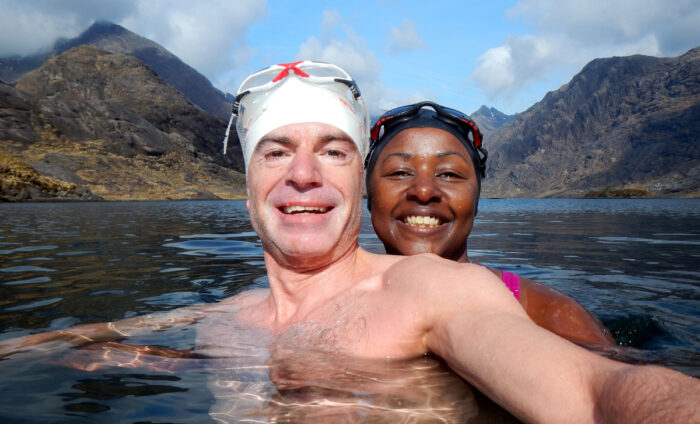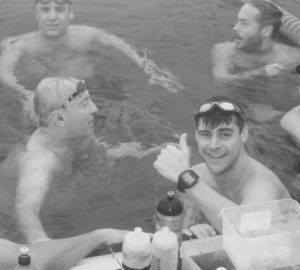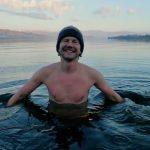
Loch Coruisk, Isle of Skye
Peter and Dawn Springett describe the spectacular journey to Loch Coruisk, a breathtaking outdoor swimming destination on the Isle of Skye
Skye is famous for water. Lots of it. Dozens of lochs, waterfalls and rock pools make it an outdoor swimmer’s delight. This makes it hard to pick a stand-out destination, but Loch Coruisk is the place we seek out every time we’re lucky enough to visit the island.
Although it’s tucked far away from the nearest road on the southern side of Skye, there are plenty of options when visiting the loch. Regular boat trips from Elgol – the quickest and most leisurely means of transport – will get you lakeside in under an hour. Those in search of adventure can take the footpath from Elgol, a seven-mile hike with strong claims to be one of most beautiful coastal walks in the UK. Be warned, however, that this route requires you to negotiate the notorious Bad Step, an exposed outcrop of rock near to your destination.
Last year we tried a third route which takes you overland from Sligachan. This eight-mile trek takes you up the glen, over the Black Cuillin via a low pass, and rewards you with a spectacular descent to Coruisk itself. Although we were lace deep in mud a couple of times, the good news was that it only rained for about 15 minutes during the outward journey, which on Skye means that you’re winning – as any resident will tell you.
Swimming in the cauldron
Isolation aside, what makes Loch Coruisk our favourite wild swimming destination? Other lakes are more beautiful (take a bow Buttermere), the pools of Snowdonia have their icy grace, and we’ve got a soft spot for the man-made elegance of Walpole Bay Tidal Pool. But Loch Coruisk, which means cauldron of waters in Scottish Gaelic, is as breathtaking as its name suggests.
The daunting Black Cuillin ridge surrounds its northern end while steep hills line the shores all the way to the south where Coruisk empties into Loch Scavaig. With such a sublime setting, it’s hardly surprising that the loch is a popular subject for writers and painters alike. Sir Walter Scott, who knew a thing or two about landscapes north of the border, thrillingly described Loch Coruisk’s “dark ledge of barren stone”. That said, Lord Tennyson was less impressed “after a fatiguing expedition on a wet day,” which left most of the scenery obscured by “thick wool-white fog” (bad luck Alfred).
Even when the clouds descend, there’s no disguising the majesty of the place. Delicate ripples play around your toes inviting experienced outdoor swimmers to plunge body and soul into the dark, serene waters. Swim towards the islands in the middle of the loch and you feel completely immersed in nature as you look back up to the mountains and see the landscape from a completely new perspective.
Rather like the local Talisker whisky the water is smoky and sweet and while we wouldn’t recommend swilling gallons of the stuff, a quick taste will stick in the memory (for the record, we didn’t see any sheep within a three mile radius of the shore).
For the practically minded, the water was about 10 degrees Celsius in April, so comfortable enough to enjoy a proper swim – but don’t forget to bring a flask of hot water laced with ginger, or traditional sweet tea to help you warm up on the way back.
Refreshed and energised by the swim, with the setting sun blazing behind us, we quick-stepped our way back the way we came and celebrated the end of a glorious day at Seamus’ Bar in the cosy Sligachan Hotel. Having run up 16 miles on the clock it was time to test a pint from the next door Cuillin Brewery and peer into the depths of a sweet, peaty glass of Talisker. A good excuse to tour the distillery the following day? Definitely. But that’s a watery story for another time.








